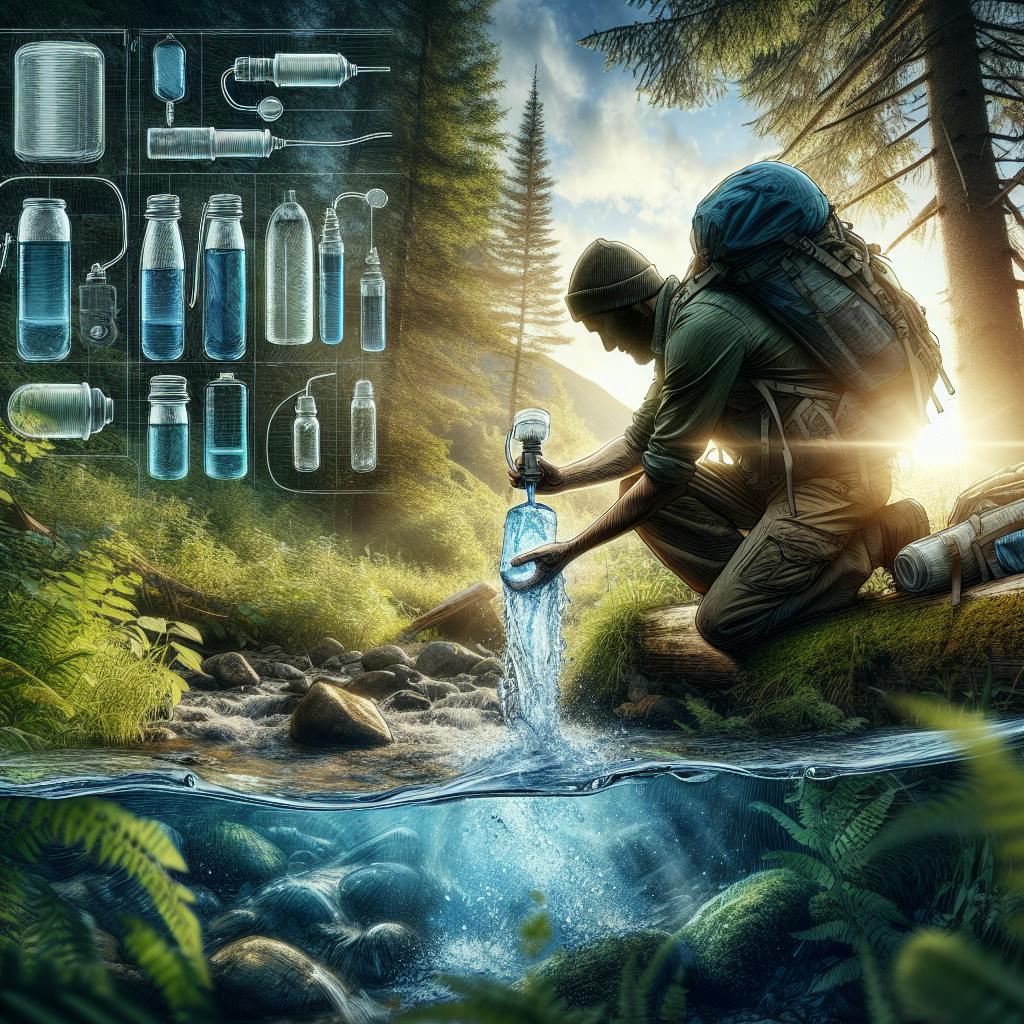When a hurricane strikes, having essential supplies ready to go is crucial for safety and survival.
This comprehensive guide outlines the key items every hurricane go bag should contain, allowing you to prepare for disasters and meet your basic needs during emergencies.
We'll cover must-have basics like food, water, first aid, tools, hygiene items, clothing, shelter supplies, communication devices, and more, helping you create a customized emergency kit for weathering any storm.
Introduction to Hurricane Go Bag Essentials
Having a well-stocked hurricane go bag with essential supplies is crucial to being prepared for a major storm. Key items to include are water, non-perishable food, first aid supplies, flashlights, batteries, cash, important documents, and more.
Customizing your hurricane go bag based on your family's unique needs is important. Those with medical conditions may need to pack prescription medications while families with children should include items to meet their needs.
When assembling your hurricane go bag, make sure to cover all the necessities across categories like food, water, shelter, first aid, tools, hygiene, clothing, etc. Having redundancies for critical items like water and flashlights is also wise.
With limited space, prioritizing what goes in your bag is key. Focus first on water, food, first aid, shelter, communication, lighting, navigation, and other absolute essentials. As you're able, supplement with comfort items, entertainment, or longer-term supplies.
Expanding beyond a basic hurricane go bag to create a more comprehensive emergency supply list can prepare you for longer disruption. Useful additions include fuel, camping supplies, and survival tools like fishing line and a tactical knife.
What should be in a disaster go bag?
A well-stocked disaster go bag is essential for emergency preparedness. Here are some of the most important items to include:
Water
Having access to clean water during an emergency is critical. Pack at least three 16.9 oz bottles of water per person. Additional water filtration devices like portable filters or purification tablets are also handy.
Food
Non-perishable, high-calorie foods like protein bars, nuts, dried fruits, and crackers make good additions. Have at least a 3-day supply packed. Consider any dietary restrictions too.
Warmth and Shelter
Staying warm and having basic shelter is vital during emergencies. Packing an emergency foil blanket, a few 12-hour body warmers, and a durable poncho per person helps meet this need.
First Aid Supplies
A comprehensive first aid kit, pain relievers, medical gloves, and 7-day supplies of critical prescription medications are absolute must-haves. Extra copies of prescriptions are also useful. Having these medical essentials can save lives if professional help is delayed.
Prioritizing water, food, warmth, shelter, and first aid supplies as the base of your "go bag" helps ensure you have what's needed to safely endure disasters from hurricanes to earthquakes and beyond. Customize with any other personal items as well.
What are the 3 items that a hurricane needs?
When preparing your hurricane go bag, focus on gathering supplies to meet your basic needs for at least 3 days. The key items to include are:
Water
- Have at least 1 gallon of water per person per day for drinking, cooking, and hygiene. Water service could be disrupted during and after the storm.
- Store water in sealed, unbreakable containers. Replace every 6 months.
Non-perishable Food
- Stock up on canned goods, dried foods, nuts, protein bars - foods that do not require refrigeration.
- Choose items that don't require cooking in case utilities are out. * Make sure to pack a manual can opener.
Medications
- Pack at least a week's supply of prescription and over-the-counter medications you normally take. Also pack common OTC meds like pain relievers, anti-diarrhea medication, antacids. * Don't forget health items like backup glasses, hearing aid batteries, etc.
Focusing on the basics - water, shelf-stable food, meds - will help you safely ride out the storm and its aftermath until utilities are restored. Check expiration dates every 6 months and replace as needed.
What is a hurricane go bag?
A hurricane go bag, also known as an emergency go bag or disaster preparedness kit, is a collection of basic supplies you may need in case a hurricane or other emergency forces you to evacuate your home or shelter in place. Having a well-stocked go bag ready in advance helps ensure you have the essentials for survival for the first 72 hours after a disaster.
The key items to include in your hurricane go bag are:
- Water - 1 gallon per person per day for at least 3 days
- Non-perishable food like granola bars, canned goods, nuts, and dried fruit
- First aid kit with bandages, gauze, antiseptic, medications, etc.
- Flashlights and batteries
- Battery-powered or hand-crank radio for weather updates
- Whistle to signal for help
- Dust mask for air quality protection
- Plastic sheeting and duct tape for temporary shelter
- Moist towelettes, garbage bags, and plastic ties for personal sanitation
- Wrench or pliers to turn off utilities
- Can opener for food
- Local maps with evacuation routes highlighted
- Prescription medications, eyeglasses, and other critical personal items
Having your hurricane go bag prepared ahead of time with these basic survival items can provide crucial support until you are able to get to a safe location or utilities are restored after the hurricane passes. Be sure to check expiration dates and replenish any depleted supplies at the start of each hurricane season.
What are 10 things you need to survive a hurricane?
When preparing your hurricane go bag, focus on gathering essential supplies to meet your basic survival needs, including:
- Water - Stock up on bottled water and water purification tablets. Dehydration is a major risk during an emergency.
- Food - Non-perishable, high-protein items like granola bars, nuts, and canned goods.
- First aid kit - Bandages, gauze, medicines, etc. Be prepared to treat injuries.
- Flashlight - Have multiple flashlights with extra batteries. Light is critical.
- Radio - Battery-powered or hand crank radio to receive emergency broadcasts.
- Cash - ATMs and credit may be unavailable, so have small bills on hand.
- Maps - Paper maps in case digital navigation fails.
- Chargers - Backup chargers for cell phones and devices. Electricity could be impacted.
- Clothing - Sturdy shoes and weather-appropriate protective clothes.
- Documents - Copies of key personal documents in a waterproof bag.
Focus on gathering the hurricane go bag basics like food, water, first aid, flashlights, and a radio. Having these 10 fundamental supplies on hand can aid survival until help arrives.
Water and Food: Sustenance for Survival
Securing Water Supplies
Having adequate water is critical in an emergency situation. Experts recommend storing at least 1 gallon of water per person per day for drinking and sanitation needs. The easiest way to store water is in food-grade plastic jugs. Make sure to date and replace the water every 6 months.
Non-perishable Food Selections
Pack high-calorie, non-perishable foods that don't require refrigeration or preparation. Good options include protein bars, dried fruits and nuts, canned meats, beans, and vegetables, as well as MREs (Meals Ready to Eat). Consider any dietary restrictions when stocking up on food.
Methods for Water Purification
In addition to stored water, bring backup methods of purification like water purification tablets, liquid bleach, or a portable water filter. These allow you to make non-potable water drinkable if needed. Follow instructions carefully when using chemical purification methods.
Essential Utensils and Cookware
Round out your food supplies with a manual can opener, mess kit, plates, bowls, mugs, cutlery, and a portable camp stove with fuel. This will allow you to open canned goods and prepare meals if you don't have access to power or kitchen amenities.
sbb-itb-b932644
First Aid Supplies: Preparing for Medical Emergencies
Having a well-stocked first aid kit is essential for hurricane preparedness. This can help you manage injuries and illnesses when medical care may be delayed.
Stocking Prescription Medications
- Pack at least a week's supply of prescription and over-the-counter medications that you or your family members take regularly. These may include heart medication, insulin, asthma inhalers, antibiotics, pain relievers, anti-diarrheals, etc.
- Make sure to check expiration dates and refill prescriptions before hurricane season starts.
- Consult your pharmacist if unsure about medication storage.
Comprehensive Wound Care
- Adhesive bandages, gauze pads, wraps, antiseptic ointments can help treat cuts, burns, sprains.
- Include sutures, medical gloves, tweezers, scissors, safety pins.
- Thermometers help monitor illnesses. Cold packs help reduce swelling.
First Aid Tools
- Multi-use tools like tweezers, scissors, safety pins have many applications.
- Always pack latex gloves to protect hands from bodily fluids.
- Tweezers can remove small debris when irrigating wounds. Scissors cut bandages, clothes.
Miscellaneous First Aid Supplies
- Hand sanitizer, insect repellent, sunscreen - prevent issues from developing or worsening.
- Emergency blankets conserve body heat to prevent hypothermia.
Having these first aid items on hand lets you handle injuries confidently when healthcare access is limited during disasters. Rotate perishable medical supplies to keep your hurricane go bag up-to-date.
Tools and Utility Supplies: Equipping for Self-Sufficiency
Illumination and Light Sources
Having reliable light sources is critical when preparing your hurricane go bag. Pack several flashlights, including handheld ones as well as headlamps to keep your hands free. Choose LED flashlights for efficiency and long battery life. Bring plenty of extra batteries or consider solar-powered battery chargers to avoid running out of power. Glow sticks can also serve as an emergency lighting option.
Versatile Multitools and Hardware
A good multitool like a Leatherman or Swiss Army Knife can assist with various repairs and tasks. Pliers, screwdrivers, scissors, and a knife blade are commonly included. A small wrench set, duct tape, and zip ties add hardware that can patch leaks, bind items, or make minor fixes. These compact items can solve problems in a pinch.
Fire Starting Essentials
The ability to start a fire is a basic survival skill. Pack weatherproof matches, a lighter, commercial firestarter wafers, and some kindling like dryer lint or wax-soaked cotton balls. Include a metal container to start campfires for cooking food or boiling water if needed.
Rope, Cord, and Binding Materials
Bring strong parachute cord, rope, or zip ties to secure belongings if needed after a hurricane. At least 25 feet of 550 paracord can assist with shelter construction, gear repairs, animal hangs, and other tasks. Waterproof zip ties are also extremely versatile for binding and fastening items.
Hygiene and Sanitation: Maintaining Health and Cleanliness
Personal Cleaning Supplies
Having basic hygiene and sanitation supplies is crucial for maintaining health and preventing illness during an emergency. Be sure to pack bar soap, shampoo, toothpaste, toothbrushes, dental floss, and other personal care items. These will allow you to attend to basic cleanliness and dental hygiene if you are displaced from your home.
Sanitary Towels and Wipes
Packing moist towelettes, sanitizing wipes, paper towels, and personal towels is also important. These can be used for general cleaning and hygiene purposes if running water is limited. The portability of wipes makes them useful for quick cleanups when on the go.
Waste Management Essentials
Properly disposing of human waste is vital to prevent the spread of illness. Be sure to include toilet paper, a small trowel for digging catholes, and plastic garbage bags in your hurricane go bag. Having these waste management tools will allow you to bury and contain waste.
Feminine Hygiene and Care
Those with menstrual cycles should pack extra feminine hygiene products, including pads, tampons, and medications as needed. Having these on hand will allow you to attend to cycles and prevent infections if access to pharmacies is disrupted during an emergency situation.
Clothing, Bedding, and Shelter: Protection Against the Elements
Appropriate Clothing for Storm Conditions
When packing for a hurricane, be sure to include moisture-wicking clothing that can keep you dry and comfortable. Pack layers like moisture-wicking shirts, pants, socks and underwear so you can adjust depending on the temperature. Hats are also important to protect you from sun and rain exposure.
Sturdy Footwear and Accessories
Pack durable, closed-toe shoes or boots that can withstand wet conditions. Bring extra shoelaces as backups. Waterproof boots are ideal if you have them. Packing waterproof gloves can also help protect your hands.
Bedding for Warmth and Comfort
Sleeping bags, blankets, and folding cots or hammocks can provide comfort and insulation. Having multiple blankets or sleeping bags allows you to layer bedding to adjust to temperatures. Waterproof covers can also help keep bedding dry.
Shelter Options: Tents and Tarps
For more substantial shelter from the elements, consider packing a tarp, tent, or emergency tube tent. Having a variety of shelter options allows you to set up cover based on your situation and location during the hurricane. Make sure to have rope, stakes, and tie-downs so you can securely set up tents and tarps. Waterproof your shelters as much as possible.
Communication and Navigation Tools
Emergency Radio and Communication Devices
Having a reliable way to get emergency information is critical when a hurricane hits. Pack a hand-crank or battery-powered hurricane go bag radio so you can listen for updates on the storm, evacuation notices, shelter locations, and more. Choose a radio that has multiple power options like solar, hand cranks, and batteries so you have backup ways to keep it powered if the batteries die.
Also consider packing two-way radios or satellite phones to communicate with family or emergency services if cell towers go down. Though more expensive, they ensure you have a reliable communication link.
Staying Charged: Power Brick and Extra Charging Cables
In addition to radios, charge your cell phone, laptop, and other devices so you can access apps, maps, and information online. Pack a high-capacity 30,000+ mAh power brick and charging cables compatible with all your devices. Top off the power brick before the storm; it can charge a phone multiple times to keep you connected.
Navigational Aids: Paper Map and Compass
Don't rely solely on phone GPS and apps. Pack laminated state maps and a compass as backups for navigation in case you lose phone signal or battery. Knowing alternate local routes helps when roads close from flooding or debris.
Signaling for Help: Whistle and Flares
If you need to signal or call for help, pack a rescue whistle that works when wet. Also consider carrying waterproof flares or glow sticks for visibility to rescuers at night or in bad weather. Both make locating you much easier if stranded.
Additional Safety and Survival Items
Respiratory Protection: Dust Masks and Plastic Sheeting
Having dust masks and plastic sheeting on hand can provide protection in the event of air contamination. Dust masks filter out particles, while plastic sheeting creates a barrier against potential irritants or contaminants when properly sealed. Consider storing N95 or N100 masks, which filter 95% and 99.97% of particles respectively. Heavy duty plastic sheeting and duct tape can be used to seal off a safe room if needed.
Emergency Signaling and Visibility
In an emergency situation, being visible and able to signal for help can be critical. Packing high-visibility vests, glow sticks, flares, and reflective materials in your hurricane go bag increases your chances of being spotted. A whistle is also essential - the loud, attention-grabbing sound it produces can alert rescuers to your location.
Thermal Insulation: Blankets and Bivvies
Maintaining proper body temperature regulation is vital. Space blankets reflect 90% of radiated body heat and provide lightweight, low-bulk insulation. Bivouac sacks or bivvies are waterproof outer layers that retain heat in cold, wet conditions. Having hurricane go bag essentials like mylar blankets and bivvies on hand prevents hypothermia.
Protection from Debris: Safety Goggles and Gloves
Hurricanes bring dangerous high winds and flooding that can cause flying debris and hazardous cleanup situations. Pack a pair of impact-resistant safety goggles and durable work gloves in your go-bag to protect your hands and eyes during and after the storm. Gloves allow for safe debris removal while goggles shield eyes from wind-blown objects. Select cut-resistant gloves and goggles with UV/anti-fogging protection.
Conclusion: Final Thoughts on Hurricane Go Bag Preparedness
Having a well-stocked hurricane go bag with essential supplies is a crucial part of emergency preparedness. This go bag allows you to quickly evacuate or take shelter during a hurricane while having the critical items you need to survive for at least 72 hours.
The key items to include in your hurricane go bag are:
- Water and non-perishable food
- First aid kit
- Flashlights and batteries
- Radio
- Cash
- Important documents
- Medications
- Whistle
- Dust masks
- Duct tape and tools
By assembling your go bag well in advance of hurricane season and keeping it updated, you help ensure you and your family's safety when disaster strikes. Sit down as a household to put together your kits - having everyone involved makes the process smoother.
Remember to check expiration dates every 6 months and replace anything that is expired, damaged or missing. Keep bags easily accessible so they can be grabbed at a moment's notice. Practicing evacuation plans using your kits also helps identify any gaps.
Being prepared allows you remain calm amidst chaos. Assembling proper hurricane go bags is one effective way we can take responsibility for our own safety, as well as assist others in our community when disasters occur. The time we invest now makes all the difference during emergencies.


